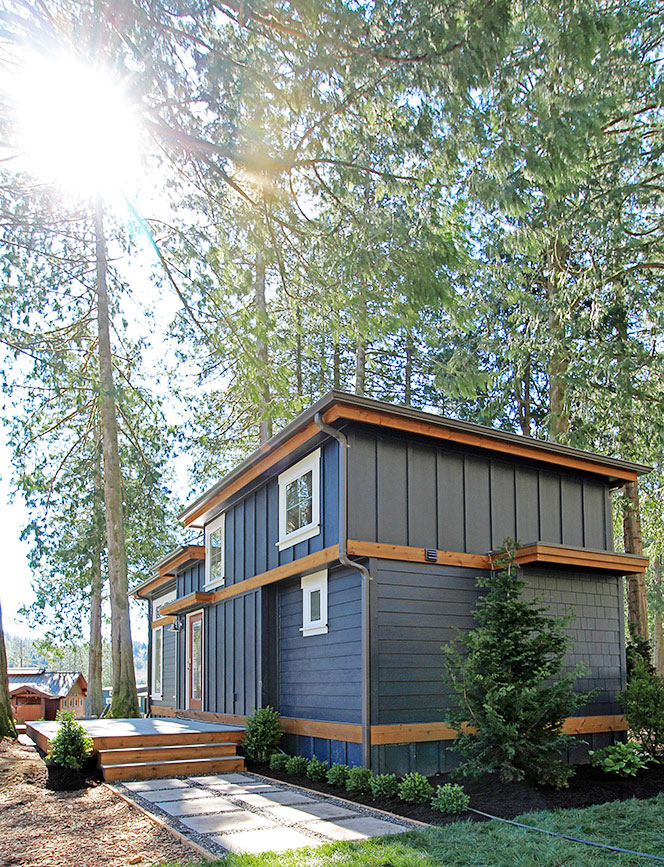TINY HOME / PARK MODEL
Frequently Asked Questions
We receive a lot of questions about our tiny homes & park models. Find answers below to the most commonly-asked questions.
The client is responsible for site prep, shipping, set up and taxes.
No, we don’t. We take great pride in the plans and models we create, and would like each model to be built with the consistent quality and craftsmanship we guarantee.
To a certain extent, yes. Depending on the desired modifications, fees may apply and the estimate completion day may be affected.
Our tiny homes and park models can be used as personal vacation homes and/or as rental properties. If local jurisdiction allows they can also be used as a permanent dwelling. Our tiny homes can also be used as an ADU (Accessory Dwelling Unit).
No, we must complete each model in its entirety. Labor & Industries will not provide an insignia sticker, which is needed to move the unit, until the model passes final inspection.
A tiny home is built to the Washington State Energy Code (WSEC) and International Residential Code (IRC). A park model is a Recreational Park Trailer (RPT) built to Department of Housing and Urban Development (HUD) standards.
We build tiny homes to two different standards. Our Park Models are built according to ANSI 119.5 Recreational Park Trailer Standards. Inspections are completed by Washington State Labor & Industries. After passing the final inspection, we receive an insignia sticker which is placed on the home. Our tiny homes are built according to the International Residential Code (IRC) and follow the Washington State Energy Code. Our tiny homes are also inspected by WA State L&I and we also receive an insignia for our tiny homes once passing final inspection.
Over 50 tiny homes in the past ten years.
Our park models are built on a custom chassis trailer and our tiny homes are built on steel frames.
Each site will have its own constraints due to the bearing capacity of the soil, and in some instances the frost line will also play a factor. We recommend that you contact a local Geotech and/or structural engineer for foundation requirements.
Dimensions can be found under each model we offer – westcoast-homes.com/tiny-homes/models/.
Typically they are made to move just once to a permanent location. They can be moved again, but they are not built to be a travel trailer due to their large size.
It takes one month for the custom chassis or steel frame to be built and then approximately four months for the tiny home to be built, based on the extent of the customization. We will also need to take into consideration the work already under contract to figure out when we can fit your build into our build queue.
No. The owner is responsible for coordinating professional transportation, but we can recommend companies to complete this.
Yes. If you are a community operator, please contact us to discuss park model customization for your community. This is how we got our start building tiny homes—check out Wildwood Lakefront Cottages, our first resort partnership: wildwoodlakefrontcottages.com.
Our park models come with a vehicle certificate of origin. We provide this certification along with other documents the owner needs to submit to their local Auditor’s Office in order to receive their title. For tiny homes they are built to the standard residential building code that site-built homes also follow so they are treated like a standard house.
Warranties are available upon request. The cost depends on the proximity to Lynden, WA, which is where we build our tiny homes.
We currently do not offer financing for park models. We are working on the possibility of financing for tiny homes with a local bank. Please contact us if you’d like more information on tiny home financing options.


